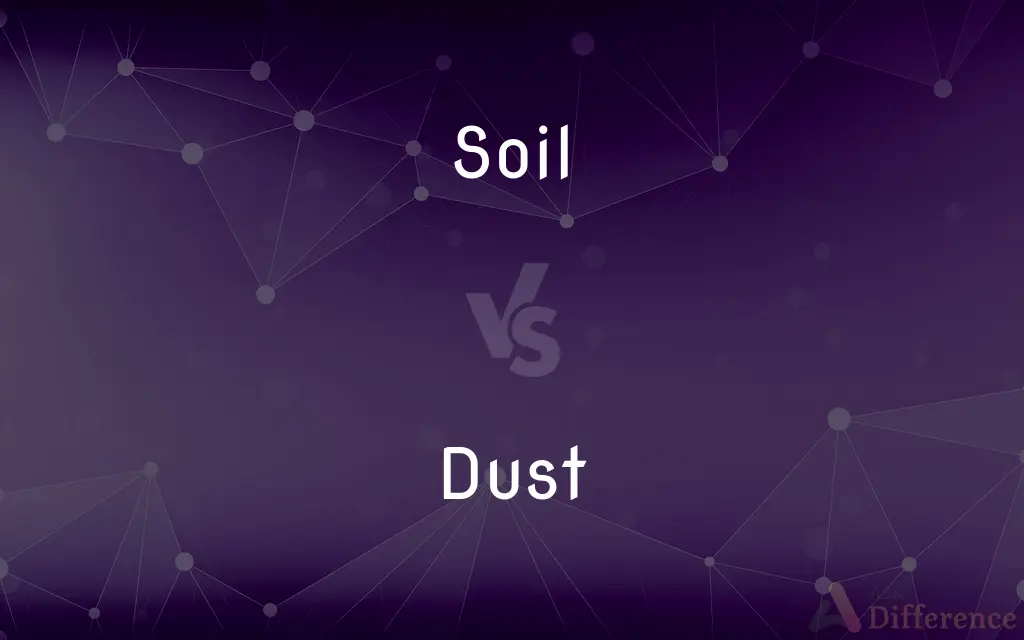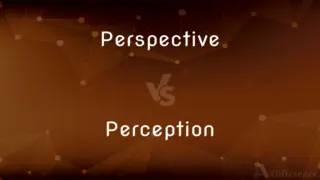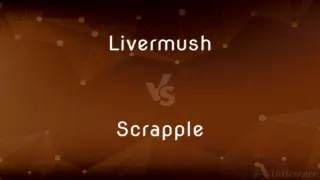Soil vs. Dust — What's the Difference?
By Fiza Rafique & Urooj Arif — Updated on February 24, 2024
Soil is a complex mixture of organic matter, minerals, and organisms supporting plant life, while dust comprises fine particles of matter, often airborne, from various sources.

Difference Between Soil and Dust
Table of Contents
ADVERTISEMENT
Key Differences
Soil and dust differ fundamentally in composition and role. Soil, a critical component of Earth's ecosystem, consists of layers rich in nutrients and microorganisms, essential for plant growth and ecological balance.
Dust, however, is made up of fine particles from soil, pollen, pollutants, and other materials, easily lifted into the air by wind or human activities.
Soil serves as the foundation for agriculture and vegetation, while dust can affect air quality and health, settling on surfaces and contributing to particulate pollution.
The presence of organic material is a defining feature of soil, providing sustenance for a multitude of organisms, whereas dust's organic content varies widely and is not geared towards supporting life.
Soil's structure and composition are influenced by factors like climate, parent material, and time, leading to diverse types such as clay, sand, and loam. Dust, conversely, can travel long distances, mixing elements from various sources, and does not contribute to plant growth or soil fertility.
ADVERTISEMENT
Comparison Chart
Composition
Organic matter, minerals, water, air
Fine particles from various sources
Role
Supports plant life, ecosystems
Can affect air quality, health
Origin
Formed by weathering, biological activity
Originates from soil, pollutants, etc.
Structure
Varied textures (clay, sand, loam)
Uniformly fine particles
Ecological Impact
Fundamental for growth, water filtration
Can contribute to pollution, health issues
Compare with Definitions
Soil
The top layer of Earth's surface, supporting plant life.
Plants draw nutrients and water from the soil.
Dust
Fine particles of matter, often airborne.
Dust storms can reduce visibility and air quality.
Soil
Comprised of organic matter, minerals, and organisms.
Healthy soil is teeming with beneficial microbes.
Dust
Can originate from soil, pollutants, and other materials.
Industrial activities increase dust levels.
Soil
Subject to erosion and degradation.
Conservation practices help prevent soil erosion.
Dust
Can be transported long distances by wind.
Saharan dust can reach the Americas.
Soil
Essential for agriculture and ecosystems.
Soil quality directly affects crop yield.
Dust
Affects respiratory health and climate.
Inhaling fine dust can lead to respiratory issues.
Soil
Varies widely in composition (clay, sand, loam).
Loamy soil is ideal for most garden plants.
Dust
Settles on surfaces, contributing to indoor pollution.
Regular cleaning reduces indoor dust accumulation.
Soil
A particular kind of earth or ground
Sandy soil.
Dust
The surface of the ground.
Soil
The upper stratum of the earth; the mold, or that compound substance which furnishes nutriment to plants, or which is particularly adapted to support and nourish them.
Dust
A single particle of earth or other matter.
Soil
Soil is a mixture of organic matter, minerals, gases, liquids, and organisms that together support life. Earth's body of soil, called the pedosphere, has four important functions: as a medium for plant growth as a means of water storage, supply and purification as a modifier of Earth's atmosphere as a habitat for organismsAll of these functions, in their turn, modify the soil and its properties.
Dust
Cover with a light dusting of a substance;
Dust the bread with flour
Soil
(uncountable) A mixture of mineral particles and organic material, used to support plant growth.
Dust
Dust is made of fine particles of solid matter. On Earth, it generally consists of particles in the atmosphere that come from various sources such as soil lifted by wind (an aeolian process), volcanic eruptions, and pollution.
Soil
To become soiled; as, light colors soil sooner than dark ones.
Dust
Fine, dry particles of matter.
Soil
The part of the earth's surface consisting of humus and disintegrated rock
Dust
A debased or despised condition.
Dust
(obsolete) A single particle of earth or other material.
Dust
To free from dust; to brush, wipe, or sweep away dust from; as, to dust a table or a floor.
Dust
Free microscopic particles of solid material;
Astronomers say that the empty space between planets actually contains measurable amounts of dust
Common Curiosities
How do soil and dust impact human health?
Soil supports food production and ecosystems, whereas dust can impair air quality and respiratory health.
Is dust always harmful?
Not always; dust can transport nutrients but often poses health risks when inhaled.
What measures can reduce dust pollution?
Reducing soil erosion, controlling industrial emissions, and maintaining vegetation cover can help.
What role does soil play in agriculture?
Soil provides nutrients, water, and support for crops, essential for agriculture.
What is soil?
Soil is a natural body comprising minerals, organic matter, water, and air, serving as a medium for plant growth.
What is dust?
Dust consists of tiny particles from various sources, including soil, that can become airborne and affect air quality.
How can dust affect the environment?
Dust can carry pollutants, affect climate by influencing solar radiation, and impact ecosystems.
How does vegetation affect soil and dust?
Vegetation stabilizes soil, reducing erosion and dust production.
How do soil and dust differ in composition?
Soil is rich in organic matter and minerals, supporting life, while dust is composed of fine, often inorganic particles.
Can dust contribute to soil formation?
Yes, dust can deposit minerals and organic matter, contributing to soil formation over time.
How does soil contribute to water filtration?
Soil filters water, removing pollutants and reducing contaminants in groundwater.
What is the importance of soil conservation?
Soil conservation ensures long-term agricultural productivity and environmental health.
How can individuals minimize dust in their homes?
Regular cleaning, using air purifiers, and minimizing clutter can reduce indoor dust levels.
What causes soil degradation?
Overgrazing, deforestation, and improper land use can lead to soil degradation.
Can dust come from sources other than soil?
Yes, dust can also originate from industrial processes, construction, and even outer space.
Share Your Discovery

Previous Comparison
Perspective vs. Perception
Next Comparison
Livermush vs. ScrappleAuthor Spotlight
Written by
Fiza RafiqueFiza Rafique is a skilled content writer at AskDifference.com, where she meticulously refines and enhances written pieces. Drawing from her vast editorial expertise, Fiza ensures clarity, accuracy, and precision in every article. Passionate about language, she continually seeks to elevate the quality of content for readers worldwide.
Co-written by
Urooj ArifUrooj is a skilled content writer at Ask Difference, known for her exceptional ability to simplify complex topics into engaging and informative content. With a passion for research and a flair for clear, concise writing, she consistently delivers articles that resonate with our diverse audience.














































